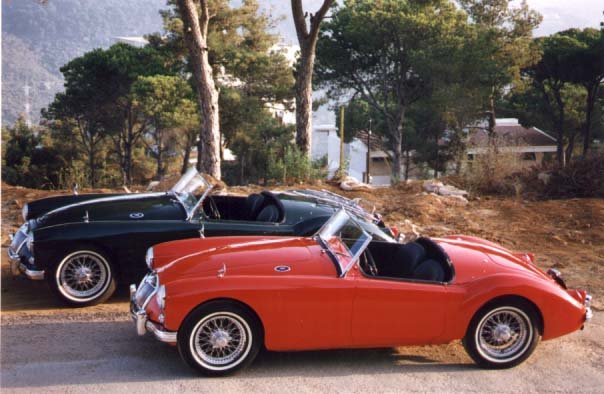After leaving school, Marsh spent ten years in the Royal Navy before deciding to change career. His first love was motorcycles, until a crash in Malta in 1953 steered him towards sports cars – an interest fostered by his stepfather, Anton de la Rue, who himself had a flair for engineering.
His first foray into the world of car construction came when he bought a part-finished Austin Seven special, which he completed with help from de la Rue only to crash into a lorry on the way to a friend's wedding, severely burning his foot.
Unperturbed, he rebuilt the special and began to race it in 750 Motor Club events, where he was approached by Hollywood Motor Maniacs and European Motor Rodeo – a stunt troupe that soon had 'Rodeo Rod' Marsh driving his special over a moving Ford V8.
By 1957 he'd given up stunt driving to set up Speedex in Luton, selling parts and bodies to specials builders, but he retained an interest in racing, winning the 750 Motor Club's Goodacre Trophy.
It was around this time that he first met Frank Costin, and after a long conversation and several drinks the pair had agreed to collaborate on a wooden car; Marcos (so named for the first three letters of their surnames) was born in 1959.
Though Marsh described the car as 'an ugly bugger', it was fiercely competitive, scoring their first customer – and former ERA driver Bill Moss – 10 wins from 10 starts in 1960.
Three years later Marsh spotted Dizzy Addicott's DART at the Racing Car Show – essentially a Minivan with the roof chopped off – which inspired him to produce a similar car with a glassfibre monocoque: the Mini Marcos. Despite never coming to a satisfactory agreement with BMC for the supply of parts, interest was overwhelming and it sold well – no doubt helped by its legendary performance at La Sarthe in 1966, where it became the only British car to finish the race at that point, albeit with French drivers.
A factory-backed effort was launched the following year but the car failed to finish, prompting a change of tack. For 1968, Marsh wanted to enter a mid-engined prototype: the futuristic Mantis XP, which featured F1 Cooper suspension in a stressed plywood monocoque.
First choice BRM failed to come good with an engine, so a Repco unit was sourced after a meeting with Jack Brabham. However, the car was fated never to run at Le Mans. It was entered into a race at Spa with Eddie Nelson and Robin Widdows as drivers, but Widdows pulled out late in the day. Marshes solution? To drive the car himself, despite no being able to fit inside it. Heavy rain eventually put paid to the attempt, the alternator malfunctioning after getting wet. The car was then sold to America.
Away from the track, things were ticking along nicely. A year after the XP had raced at Spa, the roadgoing Mantis was launched at the 1969 Motor Show to critical acclaim. Despite strong initial orders, a slumping economy forced the sale of the company in 1971.
Marsh never strayed far from Marcos, and by 1976 he had bought back its assets from the Rob Walker Group and began selling kits, relaunching the marque in 1981. The Rover V8-powered Mantula was the firm's next project, arriving in 1984, which was joined by the Spyder in 1986.
By '91, Marsh had regained the rights to produced the Mini Marcos, and a relaunched version was targeted squarely at the Japanese market. It remained on sale until 1995. However, by 2000 the company had gone bust.
Never one to give up, Marsh lead another revival in 2002 backed by Canadian Tony Stelliga, which saw the firm return to sports car racing, while the Marcasite TS250, TS500, and later TSO GTC road cars were built in Warwickshire. The company went into liquidation in 2007.
1998 MARCOS MANTARAY
top photo credit: © 2015 Classic and Sportscar
bottom photo credit: © 2015 The Redline Sportscar Company
text credit: © 2015 Greg MacLeman / Classic and Sportscar


